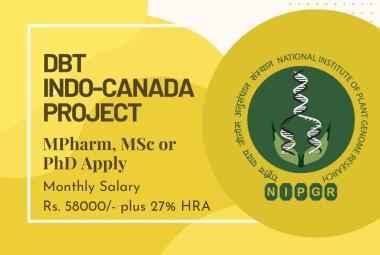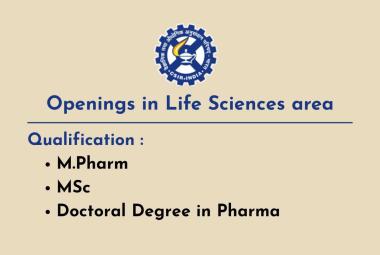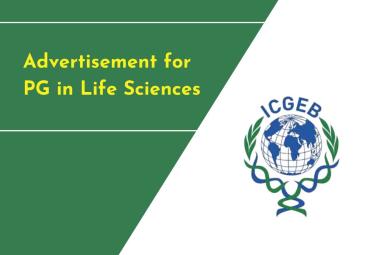Proteins are essential to life, supporting practically all its functions. They are large complex molecules, made up of chains of amino acids, and what a protein does largely depends on its unique 3D structure. Figuring out what shapes proteins fold into is known as the “protein folding problem”, and has stood as a grand challenge in biology for the past 50 years. The latest version of Google Deepmind’s AI system AlphaFold has been recognised as a solution to this grand challenge by the organisers of the biennial Critical Assessment of protein Structure Prediction (CASP). This breakthrough demonstrates the impact AI can have on scientific discovery.
This has been a focus of intensive scientific research for many years, using a variety of experimental techniques to examine and determine protein structures, such as nuclear magnetic resonance and X-ray crystallography. These techniques, as well as newer methods like cryo-electron microscopy, depend on extensive trial and error, which can take years of painstaking and laborious work per structure, and require the use of multi-million dollar specialised equipment.
The ‘protein folding problem’
In his acceptance speech for the 1972 Nobel Prize in Chemistry, Christian Anfinsen famously postulated that, in theory, a protein’s amino acid sequence should fully determine its structure. This hypothesis sparked a five decade quest to be able to computationally predict a protein’s 3D structure based solely on its 1D amino acid sequence as a complementary alternative to these expensive and time consuming experimental methods. A major challenge, however, is that the number of ways a protein could theoretically fold before settling into its final 3D structure is astronomical. In 1969 Cyrus Levinthal noted that it would take longer than the age of the known universe to enumerate all possible configurations of a typical protein by brute force calculation – Levinthal estimated 10^300 possible conformations for a typical protein. Yet in nature, proteins fold spontaneously, some within milliseconds – a dichotomy sometimes referred to as Levinthal’s paradox.
Results from the CASP14 assessment
In 1994, Professor John Moult and Professor Krzysztof Fidelis founded CASP as a biennial blind assessment to catalyse research, monitor progress, and establish the state of the art in protein structure prediction. It is both the gold standard for assessing predictive techniques and a unique global community built on shared endeavour. Crucially, CASP chooses protein structures that have only very recently been experimentally determined (some were still awaiting determination at the time of the assessment) to be targets for teams to test their structure prediction methods against; they are not published in advance. Participants must blindly predict the structure of the proteins, and these predictions are subsequently compared to the ground truth experimental data when they become available. They’re indebted to CASP’s organisers and the whole community, not least the experimentalists whose structures enable this kind of rigorous assessment.
The main metric used by CASP to measure the accuracy of predictions is the Global Distance Test (GDT) which ranges from 0-100. In simple terms, GDT can be approximately thought of as the percentage of amino acid residues (beads in the protein chain) within a threshold distance from the correct position. According to Professor Moult, a score of around 90 GDT is informally considered to be competitive with results obtained from experimental methods.
In the results from the 14th CASP assessment, AlphaFold system achieves a median score of 92.4 GDT overall across all targets. This means that their predictions have an average error (RMSD) of approximately 1.6 Angstroms, which is comparable to the width of an atom (or 0.1 of a nanometer). Even for the very hardest protein targets, those in the most challenging free-modelling category, AlphaFold achieves a median score of 87.0 GDT
AlphaFold approach to the protein folding problem
They first entered CASP13 in 2018 with their initial version of AlphaFold, which achieved the highest accuracy among participants. Afterwards, they published a paper on their CASP13 methods in Nature with associated code, which has gone on to inspire other work and community-developed open source implementations. Now, new deep learning architectures they’ve developed have driven changes in their methods for CASP14, enabling us to achieve unparalleled levels of accuracy. These methods draw inspiration from the fields of biology, physics, and machine learning, as well as of course the work of many scientists in the protein folding field over the past half-century.
A folded protein can be thought of as a “spatial graph”, where residues are the nodes and edges connect the residues in close proximity. This graph is important for understanding the physical interactions within proteins, as well as their evolutionary history. For the latest version of AlphaFold, used at CASP14, they created an attention-based neural network system, trained end-to-end, that attempts to interpret the structure of this graph, while reasoning over the implicit graph that it’s building. It uses evolutionarily related sequences, multiple sequence alignment (MSA), and a representation of amino acid residue pairs to refine this graph.
By iterating this process, the system develops strong predictions of the underlying physical structure of the protein and is able to determine highly-accurate structures in a matter of days. Additionally, AlphaFold can predict which parts of each predicted protein structure are reliable using an internal confidence measure.
They trained this system on publicly available data consisting of ~170,000 protein structures from the protein data bank together with large databases containing protein sequences of unknown structure. It uses approximately 128 TPUv3 cores (roughly equivalent to ~100-200 GPUs) run over a few weeks, which is a relatively modest amount of compute in the context of most large state-of-the-art models used in machine learning today. As with their CASP13 AlphaFold system, they are preparing a paper on their system to submit to a peer-reviewed journal in due course.
Real-world impact
When DeepMind started a decade ago, they hoped that one day AI breakthroughs would help serve as a platform to advance our understanding of fundamental scientific problems. Now, after 4 years of effort building AlphaFold, they are starting to see that vision realised, with implications for areas like drug design and environmental sustainability.
Professor Andrei Lupas, Director of the Max Planck Institute for Developmental Biology and a CASP assessor, let us know that, “AlphaFold’s astonishingly accurate models have allowed us to solve a protein structure we were stuck on for close to a decade, relaunching our effort to understand how signals are transmitted across cell membranes.”
They are optimistic about the impact AlphaFold can have on biological research and the wider world, and excited to collaborate with others to learn more about its potential in the years ahead. Alongside working on a peer-reviewed paper, they are exploring how best to provide broader access to the system in a scalable way.
In the meantime, Deepmind is also looking into how protein structure predictions could contribute to their understanding of specific diseases with a small number of specialist groups, for example by helping to identify proteins that have malfunctioned and to reason about how they interact. These insights could enable more precise work on drug development, complementing existing experimental methods to find promising treatments faster.
Arthur D. Levinson PhD, Founder & CEO Calico, Former Chairman & CEO, Genentech said, AlphaFold is a once in a generation advance, predicting protein structures with incredible speed and precision. This leap forward demonstrates how computational methods are poised to transform research in biology and hold much promise for accelerating the drug discovery process.









